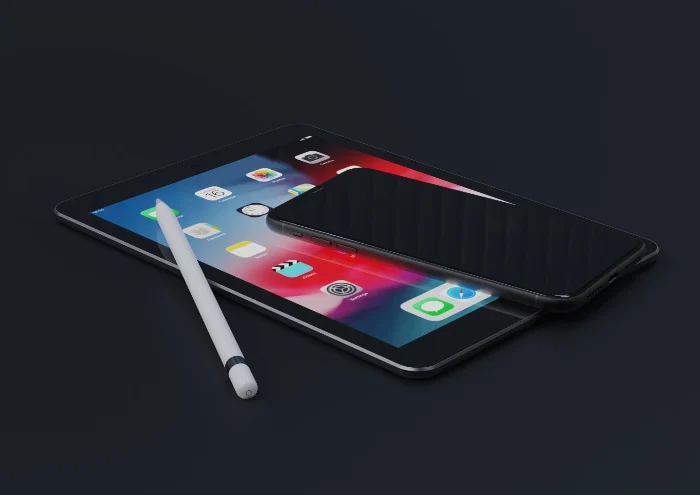This guide is designed to show you how to free up space on your iPhone and iPad. In the age of constant digital engagement, our reliance on smart devices like iPhones and iPads continues to grow at an exponential rate. This increased usage, coupled with the insatiable appetite for capturing life’s moments in photos and videos, the endless stream of apps for productivity or leisure, and the flood of documents we store for easy accessibility, can rapidly consume the available storage space on these devices. Consequently, our devices become bloated with data, sometimes leading to sluggish performance and decreased efficiency.
Ensuring that your iPhone or iPad remains free from unnecessary clutter is not just a matter of good housekeeping; it’s a vital practice for ensuring that your device continues to perform optimally, providing you with the quick response times and seamless user experience that you’ve come to expect. Moreover, maintaining an organized device helps you avoid the frustration of running out of storage space when you need it most, such as when capturing that perfect shot or downloading a critical app.
Despite our best intentions, it’s all too easy to find ourselves with a device brimming with digital clutter, running low on storage space, and affecting its performance. But fear not. Armed with this comprehensive guide, you will have all the tools and knowledge necessary to regain control over your device’s storage. This guide will provide a roadmap to freeing up valuable storage space on your iPhone or iPad, allowing your device to run smoother, faster, and more efficiently. By implementing these practical and easy-to-follow steps, you can ensure that your device remains a reliable companion in your daily digital interactions.
1. Check Storage
Firstly, assess your situation. Navigate to Settings > General > [iPhone/iPad] Storage. Here, you will find a color-coded bar that shows the space occupied by Apps, Photos, Media, and System Data. This gives you a clearer idea of what is consuming the most space. You can find out more information over at Apple’s website.
2. Delete Unnecessary Apps
Once you’ve identified the space-hogging culprits, start by deleting apps that you rarely use. Simply long-press the app icon, tap ‘Remove App,’ and then confirm by selecting ‘Delete App.’ Be careful, as this also deletes the app data.
3. Offload Unused Apps
If you’re hesitant about losing your app data, use the ‘Offload Unused Apps’ feature. This will remove the app but keep its documents and data. When the app is reinstalled, your data is restored. Go to Settings > App Store and toggle on ‘Offload Unused Apps.’
4. Review Downloaded Media
Media files, like music, movies, or podcasts, can quickly eat up space. Go through your media apps and delete downloaded content that you’ve already enjoyed or no longer need. In the TV app, for example, go to Library > Downloaded, swipe left on a show or movie, and tap ‘Delete.’
5. Manage Photos and Videos
High-resolution photos and videos are some of the most significant space-eaters. Use the ‘Optimize iPhone Storage’ feature, which replaces full-resolution photos and videos with smaller, device-sized versions, while the originals are stored in iCloud. Navigate to Settings > [your name] > iCloud > Photos and select ‘Optimize iPhone Storage.’
6. Empty ‘Recently Deleted’ Folder
When you delete photos or videos, they move to the ‘Recently Deleted’ album and stay there for 30 days. Empty this album by selecting ‘Select’ and then ‘Delete All.’
7. Review Messages
Your Messages app could be storing gigabytes of data from photos, videos, and GIFs you’ve sent and received. Go to Settings > General > iPhone Storage > Messages. You’ll see options to ‘Review Large Attachments’ and ‘Auto Delete Old Conversations.’
8. Clear Browser Cache
Safari and other browsers store data to speed up your browsing. Over time, this can add up. In Safari, go to Settings > Safari > Clear History and Website Data.
9. Delete Voicemail Messages
Voicemail messages are automatically saved to your device and can accumulate over time. Go to your Phone app, select ‘Voicemail,’ swipe left on the messages you want to delete and tap ‘Delete.
10. Backup and Reset
In extreme cases, if you still need more space and are comfortable with starting fresh, back up your device to iCloud or your computer, then erase all content and settings. Head to Settings > General > Reset > Erase All Content and Settings.
Remember, a clutter-free device is a more efficient device. Regularly reviewing and managing your iPhone or iPad’s storage will help ensure smoother performance and a better user experience. We hope that you find out guide on how to free up space on the iPhone and iPad helpful, if you have any comments, questions, or suggestions, please let us know in the comments section below.
Image Credit: Nana Dua
Filed Under: Apple, Apple iPhone, Guides
Latest Aboutworldnews
Disclosure: Some of our articles include affiliate links. If you buy something through one of these links, Aboutworldnews may earn an affiliate commission. Learn about our Disclosure Policy.







